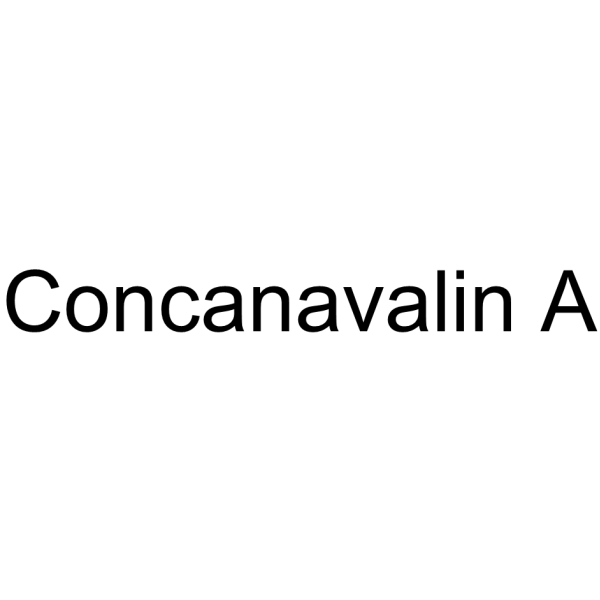Concanavalin A

Concanavalin A structure
|
Common Name | Concanavalin A | ||
|---|---|---|---|---|
| CAS Number | 11028-71-0 | Molecular Weight | 304.35 | |
| Density | N/A | Boiling Point | N/A | |
| Molecular Formula | C15H24 | Melting Point | N/A | |
| MSDS | Chinese USA | Flash Point | 39 °C | |
| Symbol |

GHS08 |
Signal Word | Danger | |
|
The second virial coefficient as a predictor of protein aggregation propensity: A self-interaction chromatography study.
Eur. J. Pharm. Biopharm. 96 , 282-90, (2015) The second osmotic virial coefficients (b2) of four proteins - lysozyme, recombinant human lactoferrin, concanavalin A and catalase were measured by self-interaction chromatography (SIC) in solutions of varying salt type, concentration and pH. Protein aggrega... |
|
|
Osmolyte effects on the self-association of concanavalin A: testing theoretical models.
Biochemistry 52(51) , 9367-74, (2013) The formation and stability of protein-protein interfaces are of obvious biological importance. While a large body of literature exists describing the effect of osmolytes on protein folding, very few studies address the effect of osmolytes on protein associat... |
|
|
Cellular interaction of nontypeable Haemophilus influenzae triggers cytotoxicity of infected type II alveolar cells via apoptosis.
Pathog. Dis. 73(2) , 1-12, (2015) Nontypeable Haemophilus influenzae (NTHi) is an important cause of lower respiratory tract infections, resulting in exacerbations of chronic obstructive pulmonary disease (COPD). Despite its pathogenic potential, little is known regarding the role of intracel... |
|
|
Protective effects of lipocalin-2 (LCN2) in acute liver injury suggest a novel function in liver homeostasis.
Biochim. Biophys. Acta 1832(5) , 660-73, (2013) Lipocalin-2 is expressed under pernicious conditions such as intoxication, infection, inflammation and other forms of cellular stress. Experimental liver injury induces rapid and sustained LCN2 production by injured hepatocytes. However, the precise biologica... |
|
|
Extensive Charge Reduction and Dissociation of Intact Protein Complexes Following Electron Transfer on a Quadrupole-Ion Mobility-Time-of-Flight MS.
J. Am. Soc. Mass Spectrom. 26 , 1068-76, (2015) Non-dissociative charge reduction, typically considered to be an unwanted side reaction in electron transfer dissociation (ETD) experiments, can be enhanced significantly in order to reduce the charge state of intact protein complexes to as low as 1+ on a com... |
|
|
Distinguishing Loss of Structure from Subunit Dissociation for Protein Complexes with Variable Temperature Ion Mobility Mass Spectrometry.
Anal. Chem. 87 , 6271-9, (2015) The thermal stability and strength of interactions in proteins are commonly measured using isothermal calorimetry and differential scanning calorimetry providing a measurement that averages over structural transitions that occur as the proteins melt and disso... |
|
|
Evidence of MTCBP-1 interaction with the cytoplasmic domain of MT1-MMP: Implications in the autophagy cell index of high-grade glioblastoma.
Mol. Carcinog. 55 , 148-60, (2016) Progression of astrocytic tumors is, in part, related to their dysregulated autophagy capacity. Recent evidence indicates that upstream autophagy signaling events can be triggered by MT1-MMP, a membrane-bound matrix metalloproteinase that contributes to the i... |
|
|
Harnessing a nanostructured fluorescence energy transfer sensor for quick detection of extremely small amounts of glucose.
J. Diabetes Sci. Technol. 7(1) , 45-52, (2013) Fluorescence technique is one of the major solutions for achieving the continuous and noninvasive glucose sensor for diabetes. In this article, a highly sensitive nanostructured sensor is developed to detect extremely small amounts of aqueous glucose by apply... |
|
|
Calcium is required for coelomocyte activation in earthworms.
Mol. Immunol. 47 , 2047-56, (2010) The role of calcium signaling in activation of both innate and adaptive immunity is basically important, however, the evolutionary aspects are not clarified yet. Currently limited data are available about calcium levels of coelomocytes, cellular mediators of ... |
|
|
DA virus mutant H101 has altered CNS pathogenesis and causes immunosuppression.
J. Neuroimmunol. 277(1-2) , 118-26, (2014) Viruses use various mechanisms to evade clearance by the host. Investigating how a few changes in the genome of a non-lethal virus can lead to altered disease, from survivable to immunosuppression/death, would provide valuable information into viral pathogene... |